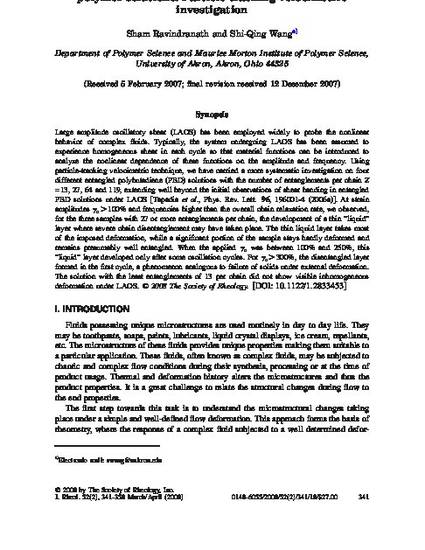
Large amplitude oscillatory shear (LAOS) has been employed widely to probe the nonlinear behavior of complex fluids. Typically, the system undergoing LAOS has been assumed to experience homogeneous shear in each cycle so that material functions can be introduced to analyze the nonlinear dependence of these functions on the amplitude and frequency. Using particle-tracking velocimetric technique, we have carried a more systematic investigation on four different entangled polybutadiene (PBD) solutions with the number of entanglements per chain Z=13, 27, 64 and 119, extending well beyond the initial observations of shear banding in entangled PBD solutions under LAOS [Tapadia , Phys. Rev. Lett. 96, 196001-4 (2006a)]. At strain amplitudes gamma(o)>100% and frequencies higher than the overall chain relaxation rate, we observed, for the three samples with 27 or more entanglements per chain, the development of a thin "liquid" layer where severe chain disentanglement may have taken place. The thin liquid layer takes most of the imposed deformation, while a significant portion of the sample stays hardly deformed and remains presumably well entangled. When the applied gamma(o) was between 100% and 250%, this "liquid" layer developed only after some oscillation cycles. For gamma(o)>300%, the disentangled layer formed in the first cycle, a phenomenon analogous to failure of solids under external deformation. The solution with the least entanglements of 13 per chain did not show visible inhomogeneous deformation under LAOS. (C) 2008 The Society of Rheology.
Available at: http://works.bepress.com/shi-qing_wang/1/
